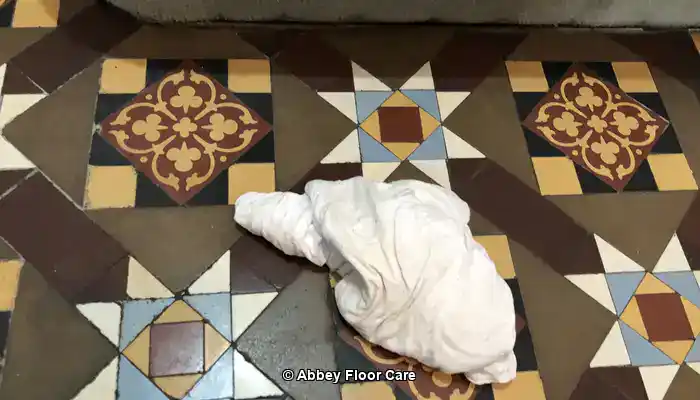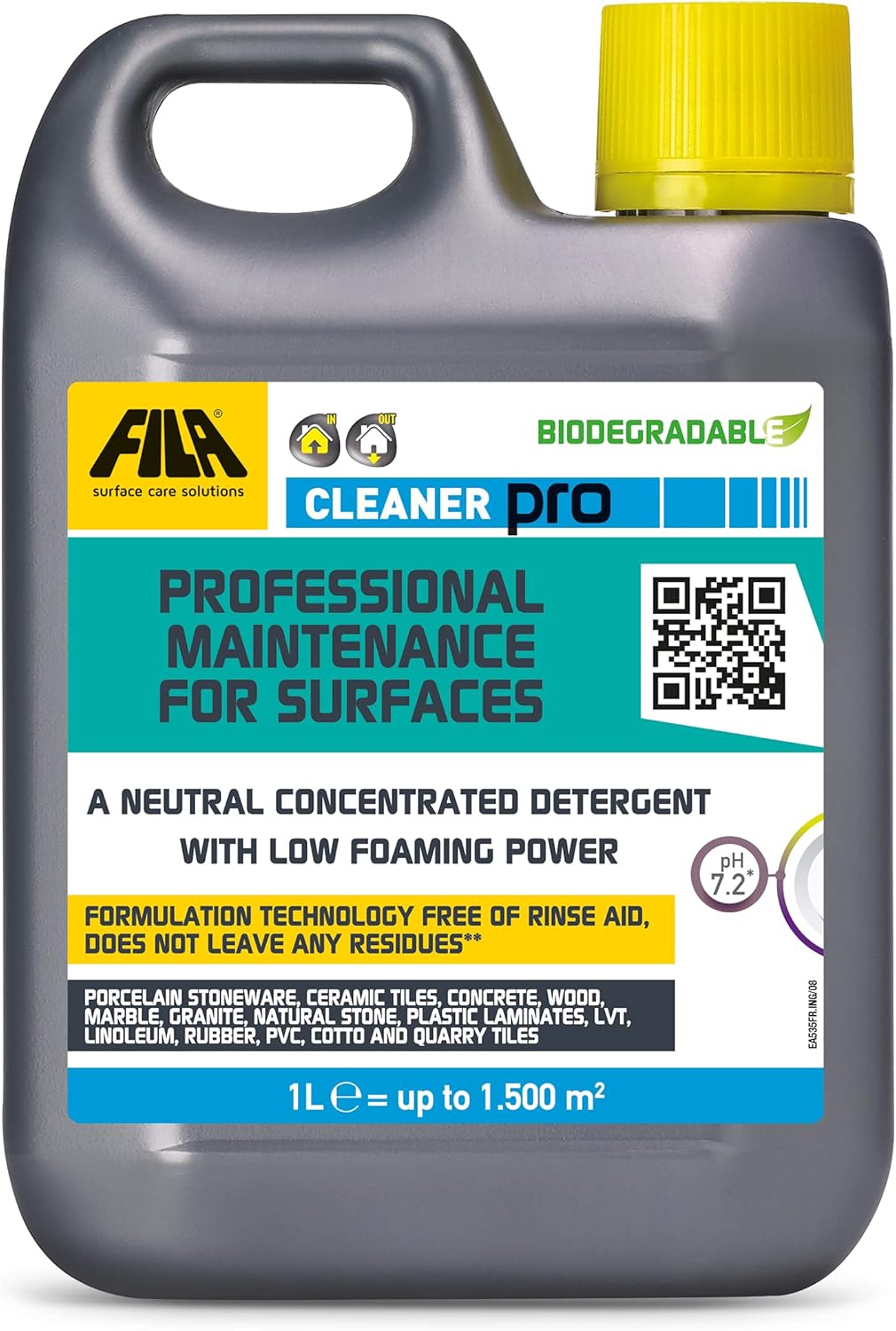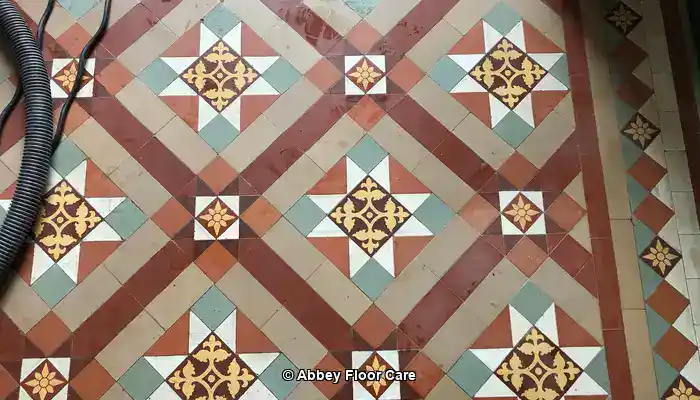
Last Updated on October 30, 2025 by David
Key Strategies for Reviving Colour and Pigment in Your Victorian Mosaic Tiles
- Victorian mosaic tiles often experience colour loss due to a combination of ingrained dirt, aged coatings, and wear on the surface rather than merely the effects of time. Regular exposure to foot traffic and environmental factors can significantly contribute to this fading, necessitating a comprehensive restoration approach.
- Using harsh chemicals and aggressive scrubbing can strip away original pigments, particularly from encaustic and geometric tiles, leading to irreversible damage and further deterioration of their aesthetic appeal. This highlights the importance of employing safe and effective cleaning methods that protect the integrity of these historic tiles.
- Initiating safe restoration begins with a comprehensive cleaning process that utilises pH-neutral solutions and low-speed rotary machines fitted with soft brushes to protect the tile surface. This gentle approach ensures that the tiles are cleaned without causing additional harm or wear.
- Old sealers and waxes require careful removal to unveil the true condition of the tile surface, which is crucial for effective restoration. Identifying and eliminating these layers allows for a thorough assessment of any underlying damage that may need to be addressed during the restoration process.
- Achieving colour enhancement is possible through the use of breathable, stone-safe sealers that enrich the tile’s tones without leaving an artificial glossy finish. These sealers not only enhance the appearance but also protect the tiles from future deterioration.
- Professional restoration can rejuvenate the original pigments without resorting to repainting or artificial colouration, thus preserving the authenticity of the tiles. This ensures that the historical significance and original craftsmanship are maintained throughout the restoration process.
- Maintaining restored tiles involves gentle cleaning routines and avoiding acidic or bleach-based products that could damage the surface over time. Establishing a regular maintenance schedule can prolong the life and appearance of the restored tiles.
- Implementing heritage-sensitive methods is vital in preserving both the aesthetic and historical value of these beautiful tiles. This commitment to authenticity ensures that restoration efforts respect the original artistry and craftsmanship of the tiles.
Discovering Proven Techniques for the Restoration of Victorian Tiles

Abbey Floor Care restoring the colour to a Victorian clay tile floor using a colour-enhancing impregnating sealer.
Victorian encaustic and mosaic tiles are integral to British architectural heritage, celebrated for their intricate craftsmanship and distinctive colour palettes that are derived from mineral pigments embedded directly within the clay tile bodies. These tiles not only add significant aesthetic value but also carry a rich historical narrative, demanding diligent preservation and expert restoration to maintain their unique charm and character over time. Understanding the significance of these tiles is crucial for any restoration project.
Pro Tip: Recommended Products for Daily Maintenance of Your Victorian Tiles

Fila Pro Floor Cleaner
|

LTP Colour Intensifier & Stainblock H20
|

Vileda H2PrO Spin Mop System
|
Over time, however, these tiles can lose their visual appeal due to various factors, including surface wear, the effects of harsh chemicals, and environmental influences. The process of restoring their original vibrancy is a specialized task that necessitates a comprehensive understanding of the materials involved, historically accurate techniques, and high-quality products to guarantee effective and lasting results. Without proper care, these beautiful tiles can fall into disrepair, necessitating expert intervention to bring them back to life.
Identifying the Causes of Colour Loss and Surface Dulling in Victorian Mosaic Tiles

Example of Victorian Clay Tile Floor dulled through surface wear and damage.
Although the pigments are integral to the tiles, several factors contribute to their fading and dulling:
- Accumulated dirt and grime: Continuous foot traffic introduces fine particles and oils that permeate porous surfaces, scatter light, and mute the vibrant colours that once stood out. This gradual accumulation can create a dull appearance that detracts from the tile's original charm.
- Wax and polish buildup: Layers of non-breathable wax or sealants trap moisture, resulting in a cloudy or yellowed appearance that significantly diminishes the vibrancy of the tiles. This obscured beauty can often be restored through careful cleaning and appropriate sealing techniques.
- Moisture-driven issues: Many Victorian tiles were installed over subfloors without damp-proof membranes, leading to rising damp that carries soluble salts. These salts crystallise on the tile surface as efflorescence, obscuring the original tones and making restoration more complicated. Addressing these issues early is crucial for successful restoration.
- Physical abrasion: Small surface scratches accumulated from years of foot traffic disrupt smooth light reflection, further diminishing the visual richness of the tiles. This wear and tear necessitate careful evaluation and treatment during the restoration process.
Effective restoration meticulously addresses each of these contributors while respecting the historical and aesthetic integrity of the tiles, ensuring they retain their beauty for future generations.
How Does Breathability Impact Restoration in the Absence of a Damp-Proof Membrane?
Given that many Victorian tiled floors exist on older subfloors that lack a damp-proof membrane (DPM), it becomes crucial that their natural clay structure remains permeable. This permeability allows moisture from the subfloor to evaporate freely. Non-breathable wax coatings or film-forming sealers obstruct this essential evaporation pathway, resulting in moisture accumulation beneath the surface. Such entrapment can lead to salts and humidity, causing efflorescence and degradation of the surface minerals, as well as the undesirable issue known as wax blooming—a whitish film or haze on the tile. Restoration strategies must prioritise breathable impregnating sealers that protect the tiles while permitting moisture vapour to escape, thus preventing long-term damage and ensuring the integrity of the restoration.
Deepening Your Understanding of Pigments and Tile Composition

An example of different pigments in a Victorian Clay tile floor during restoration by Abbey Floor Care
What Mineral Oxide Pigments Are Utilised in Victorian Tiles?
Victorian mosaic and encaustic tiles derive their distinctive earthy colours from mineral oxide pigments embedded directly into the clay. These pigments not only confer durability but also enhance colour depth. The primary pigments include:
- Iron oxide: responsible for terracotta reds, rust browns, and soft ochres that characterise many Victorian tiles. These rich tones contribute to the warm aesthetic that defines the visual charm of these surfaces.
- Manganese: yields deep browns and rich blacks that add contrast and depth to tile designs, enhancing the overall visual dynamics of the patterns.
- Cobalt: offers varying shades of blue that can create striking visual effects in tile patterns, adding a unique flair to the overall design.
- Chromium: produces natural green tones that complement the earthy palette of Victorian tiles, enriching their aesthetic diversity.
How Are Victorian Tiles Fired and Fused During Manufacturing?
During the manufacturing process, the tiles are fired at temperatures around 1100°C. This process vitrifies the clay and fuses the pigments deep into the tile body, ensuring that the colour permeates through the tile rather than merely resting on the surface. As a result, this firing process offers lasting vibrancy and resilience to the tiles, making them capable of withstanding the test of time.
What Are the Characteristics of a Porous Unglazed Finish in Victorian Tiles?
Victorian tiles typically feature a porous, unglazed matte finish, which contributes to their natural aesthetic appeal. However, this porosity also makes the tiles absorbent and vulnerable to surface contamination and moisture, necessitating careful cleaning and maintenance practices to preserve their integrity and beauty over time. Owners of such tiles must be vigilant in their upkeep to prevent deterioration.
How Does Colour Durability Vary Among Different Tile Types?
Natural earth pigments, particularly in red and yellow tiles, tend to contain fewer mineral additives than darker hues like black, which often include manganese. This difference in composition means that red and yellow tiles are generally less hard-wearing and more susceptible to surface dishing under heavy foot traffic. Such wear manifests as shallow depressions where footfall concentrates, leading to uneven colour intensity and a loss of surface flatness that can be challenging to rectify during restoration.
What Considerations Are Essential for Effective Restoration of Victorian Tiles?
A comprehensive understanding of pigment composition and tile wear patterns is crucial when planning a restoration. Softer-toned tiles require gentler cleaning techniques and specially formulated impregnating sealers that respect their physical attributes while enhancing colour vibrancy. Darker, harder tiles can withstand more intensive cleaning but still necessitate breathable, colour-enhancing protections to maintain their vividness over time and prevent future damage.
Implementing Thorough Cleaning Techniques for Restoring Victorian Mosaic Tiles
Thorough cleaning is fundamental to restoring Victorian encaustic and mosaic tiles to their original splendour. However, the cleaning process necessitates a specialized approach that goes beyond standard pH-neutral detergents. Professional restorers utilise carefully formulated alkaline cleaners and mechanical techniques to dismantle heavy soiling and residual substances without compromising the historical integrity of the tile fabric.
What Is the Process for Initial Removal of Debris from Victorian Tiles?
The cleaning process begins with removing all loose dirt and grit using soft brushes or vacuuming with brush attachments. This initial step is vital to prevent scratching the delicate tile surfaces during subsequent cleaning phases, ensuring a safe and effective restoration process that preserves the integrity of the tiles.
How Do Alkaline Cleaners Assist in Intensive Soil Removal?
Unlike pH-neutral cleaners, which often lack the necessary chemical strength to target ingrained fatty acids and organic soils, alkaline cleaners are essential for thoroughly breaking down household oils, grease, and sticky residues that frequently accumulate on tile surfaces and in grout lines. These alkaline formulations dissolve the binding agents of dirt, sugars, and fats, facilitating effective removal while remaining compatible with the mineral composition of Victorian tiles. Professional-grade alkaline products, such as PS87 PRO or tailored formulations from heritage cleaning specialists, are typically used in diluted form. This ensures thorough cleaning without excessive aggression towards the clay body. Caution is crucial even with alkaline cleaners, and spot testing is always recommended prior to full application to avoid any potential damage.
How Is Mechanical Agitation Used with Appropriate Cleaning Pads?
Mechanical action significantly enhances cleaning efficacy. Low-speed rotary scrubbers fitted with red or, occasionally, green non-abrasive pads are commonly employed to agitate soils from small pits, tile surfaces, and grout lines. These pads effectively clean while protecting the integrity of tile edges and delicate surface details, ensuring a thorough yet gentle cleaning process that respects the tile’s historical value.
What Techniques Are Used for Removing Waxes and Exotic Sealants from Tiles?
Years of use often lead to the accumulation of old waxes and sealants, particularly from DIY attempts with unsuitable products. Water-based cleaners—whether alkaline or mildly acidic—are preferred for removing these residues without damaging the tile’s mineral structure. However, stubborn ‘exotic’ or solvent-resistant coatings require targeted solvent-based removers, such as <em>Lithofin Wax-Off</em> or LTP Solvex. These solvents effectively soften and emulsify waxes and old sealants but must be handled with care by professionals trained in their safe application and disposal to avoid any unintended damage.
Why Is Proper Rinsing and Drying Important After Cleaning?
After the chemical cleaning process, thorough rinsing is critical to eliminate all cleaning residues. Multiple rinses with clean water, combined with wet vacuum extraction, ensure that no detergent or solvent traces remain to interfere with subsequent restoration coatings. Drying times vary based on environmental conditions, such as humidity, surface type, and moisture content. Restoration experts always utilise moisture meters to confirm that the tiles are completely dry before applying any impregnating sealers or protective treatments. This meticulous approach prevents moisture entrapment that could otherwise cause efflorescence, staining, or damage beneath sealed layers, ensuring the longevity of the restoration.
What Are the Advantages of Comprehensive Cleaning for Victorian Tiles?
Thorough cleaning reveals the true condition of the tiles by eliminating visual obstructions. This process exposes areas that may require repair and provides a clean, receptive surface for colour-enhancing impregnators or other restorative products. This careful preparation is fundamental to the success and longevity of Victorian mosaic tile restoration, making it an essential step in the overall process.
How to Enhance Colour with Premium Impregnating Sealers for Victorian Tiles
Restorers utilise impregnating colour-enhancing sealers manufactured by LTP and <a href=”https://amzn.to/4ntC8ma”>Lithofin</a>, brands recognised for their advanced, heritage-approved formulations. Unlike superficial coatings, these sealers:
- Penetrate deeply into tile pores to physically enrich colour by altering light refraction, thus enhancing the visual appeal of the tiles. This process not only restores vibrancy but also protects the underlying material.
- Maintain vapour permeability, which is essential for moisture escape, particularly critical in older floors lacking DPM layers to prevent deterioration. This feature is vital for the long-term preservation of the tiles.
- Offer durable protection against stains and foot traffic without altering the natural texture or gloss of the tiles, ensuring their longevity. The application method allows for a natural finish that enhances the overall aesthetic.
- Are applied in multiple light coats, allowing each layer to penetrate before the next is added, ensuring complete uniformity and optimal results. This meticulous approach contributes to a more effective restoration process.
These sealers directly combat fading by restoring vibrancy while preserving the historic floor’s breathable nature, ensuring longevity and maintaining aesthetic appeal. Their careful application is integral to the restoration process, offering both beauty and protection.
Expert Techniques for Repairing Damaged Tiles and Mastering Colour Tinting
Tiles that exhibit chips, cracks, or missing pieces require careful repair using tinted epoxy or lime-based mortars, colour-matched with natural mineral oxides to ensure a seamless finish. Restoration specialists often source matching replacement tiles from salvage archives to maintain the continuity of patterns and designs. Colour tinting involves selectively applying wax or resin mixtures infused with earth pigments to seamlessly blend worn or missing pattern areas while respecting tile breathability and reversibility, ensuring an authentic restoration that honours the original craftsmanship.
What Are the Best Practices for Successful Colour Tinting?
- Employ small, controlled applications to avoid overt colouring, ensuring a natural and unobtrusive appearance. This careful technique helps maintain the integrity of the tile's original design.
- Conduct patch testing on inconspicuous areas before complete application to ascertain compatibility and effectiveness. This step is crucial to avoid any adverse reactions during the restoration process.
- Ensure compatibility with the impregnating sealers applied across the entire surface to maintain a cohesive finish. This alignment is key to achieving the desired visual outcome.
How to Maintain Restored Victorian Mosaic Floors for Long-Term Longevity
To sustain restored colour and condition, ongoing care is essential, including:
- Routine cleaning with pH-neutral, non-abrasive detergents specifically designed for historic tiles to avoid damage. This approach prevents wear while preserving the tile's original beauty.
- Implementing preventive measures, such as placing entrance mats to minimise dirt ingress and protect the integrity of the tiles. These small changes can have a significant impact on the longevity of the flooring.
- Promptly cleaning up liquid spills, particularly acidic substances like vinegar or wine, to prevent surface etching and damage. Quick action is essential to maintain the tiles' pristine condition.
- Regularly reapplying breathable impregnating sealers every 3–5 years or as wear necessitates to maintain protective layers. Timely reapplication ensures the tiles remain safeguarded against future wear.
- Closely monitoring floors for signs of efflorescence or moisture ingress that may indicate underlying damp issues, ensuring timely intervention. Addressing these concerns quickly can prevent more extensive damage.
What Common Mistakes Should Be Avoided in Tile Restoration Projects?
- Avoid wax treatments that can obstruct breathability, cause efflorescence, or lead to wax blooming, which can mar the appearance of the tiles. These issues can be costly and time-consuming to rectify.
- Do not use acrylic or polyurethane sealants that trap moisture, leading to degradation and damage over time. This choice can compromise the tiles' structural integrity.
- Limit the use of harsh chemical cleaners, as they can erode clay and pigments, resulting in permanent damage to the tiles. Opt for gentler solutions that effectively clean without causing harm.
- Never repaint tiles; paint films alter their visual and physical properties and are not reversible, ultimately compromising the integrity of the tiles. Restoration should honour the original craftsmanship rather than alter it.
- Recognise and address issues in older subfloors before sealing to ensure a long-lasting restoration that can withstand the test of time. Thorough assessments are crucial for achieving successful results.
Highlighting Successful Restoration Examples in the Field
Real-world examples underscore the successful application of these principles in restoration projects:
Victorian Hallway Restoration in Sheffield – A Case Study

Our cleaning process effectively removed years of wax and grime, followed by the application of a Lantania Avo colour-enhancing impregnating sealer that visibly deepened the tile colours. This was complemented by the application of an acrylic topical sealer to provide surface protection on floors laid over a damp-proof membrane, ensuring the longevity and vibrancy of the restored tiles.
Civic Mosaic Floor Restoration in Chesterfield – An Overview

Following the cleaning and removal of outdated topical sealers, the floor was sealed with an LTP Colour Enhancing Impregnating sealer. The surface was further protected with a wax, meticulously applied to seamlessly integrate the clay tiles into the building’s historic fabric, preserving its authenticity and charm.
Preserving Cultural Heritage Through Expert Restoration Practices
Restoring the colour and pigment of Victorian mosaic tiles represents a multifaceted endeavour that integrates material science, skilled craftsmanship, and a profound sensitivity to heritage values. By utilising premium impregnating colour-enhancing sealers from industry leaders such as Dry Treat, Lantania, and Lithofin, one can ensure long-term breathability, protection, and vibrancy of colour. Expert cleaning, meticulous repair, and dedicated maintenance are essential components in maintaining authenticity while rejuvenating these historic floors for future generations to appreciate and enjoy.
Frequently Asked Questions About the Restoration of Victorian Mosaic Tiles
What Exactly Are Victorian Mosaic Tiles and Why Are They Significant?
Victorian mosaic tiles are decorative tiles that gained popularity in the 19th century, renowned for their vibrant colours and intricate patterns. These tiles were commonly utilised in both public buildings and private homes, showcasing the artistry and craftsmanship of the era, making them significant elements of our architectural heritage.
How Can I Achieve Successful Restoration of Faded Victorian Mosaic Tiles?
Restoring faded Victorian mosaic tiles involves a series of critical steps: thorough cleaning, repairing any damages, applying new pigments to replicate the original colours, and sealing the tiles to protect them from future wear and degradation. Each step is crucial to ensure the longevity and beauty of the restoration.
What Essential Materials Are Required for Effective Tile Restoration?
Essential materials for tile restoration include specialised cleaning solutions, pigments, adhesives, grout, and protective sealants, all selected for their compatibility with the original tiles to ensure an effective and authentic restoration process that respects the historical integrity of the tiles.
How Long Does the Tile Restoration Process Typically Take?
The duration of tile restoration varies significantly based on the size and condition of the area being restored, typically ranging from a few days for smaller projects to several weeks for larger restorations, allowing for thorough and careful work.
Is It Possible to Undertake the Restoration on My Own?
Yes, smaller restoration projects can be tackled as DIY tasks if you possess the necessary skills and tools. However, more complex repairs usually require professional expertise to guarantee quality results and avoid potential damage that could arise from improper techniques.
What Is the Estimated Cost Involved in Restoring Victorian Mosaic Tiles?
Costs can fluctuate significantly based on the project’s size and condition, typically ranging from a few hundred to several thousand dollars for comprehensive restorations, depending on the extent of the work required and the materials used.
How Do I Select the Right Restoration Expert for My Needs?
When selecting restoration professionals, look for those with experience in historic projects, positive reviews, and a demonstrated commitment to using authentic materials and techniques for the best results, ensuring your restoration is handled with expertise.
What Common Challenges Do Restorers Encounter During Projects?
Restorers often face challenges such as matching original colours, repairing damaged tiles, and ensuring the longevity and effectiveness of the restoration work, all of which require skill and experience to navigate successfully.
How Can I Effectively Maintain Restored Tiles Over Time?
Regular cleaning with pH-neutral products, avoiding harsh chemicals, resealing periodically, and promptly addressing any damage are crucial steps for maintaining the condition and appearance of restored tiles, ensuring they continue to shine for years to come.
What Innovations Are Currently Being Implemented in Tile Restoration Techniques?
Recent innovations in tile restoration encompass advanced cleaning solutions, new sealant types, and digital technologies that facilitate precise colour matching and pattern replication in restoration projects, significantly enhancing the overall quality of work and results.
The article Restoring Colour and Pigment to Faded Victorian Mosaic Tiles was first found on https://www.abbeyfloorcare.co.uk
The Article Restoring Faded Victorian Mosaic Tiles to Their Original Colour appeared first on https://fabritec.org
The Article Restoring Victorian Mosaic Tiles to Their Original Color Was Found On https://limitsofstrategy.com
References:
https://limitsofstrategy.com/restoring-victorian-mosaic-tiles-to-their-original-color-2/


